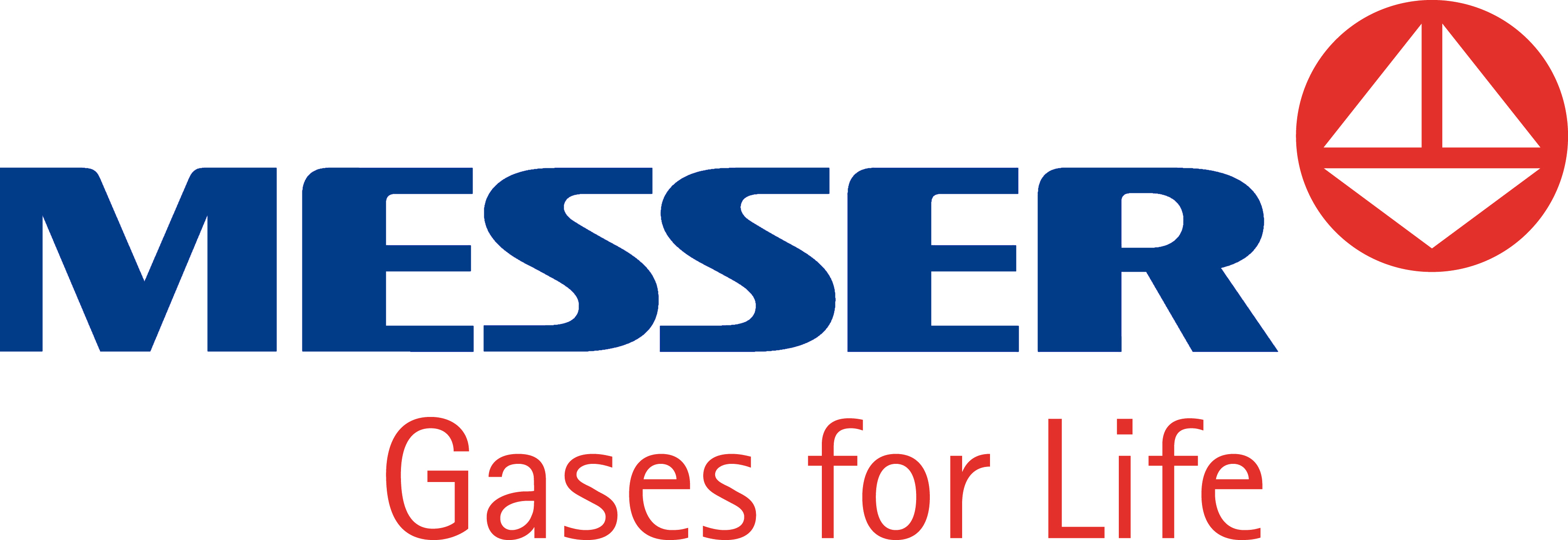By: Editorial Team
Reading time: 4 Minutes
◤ HEALTH
Enough oxygen for Covid-19 patients
In severe cases of Covid-19, artificial ventilation can save lives. For the continuous replenishment of medical oxygen, Messer created new capacities ad hoc.
Only a small share of the people who contract Covid-19 suffer from a severe case of the infection. According to the Robert Koch Institute’s data relative to experience in Germany, about 17 percent of those hospitalized patients are then artificially ventilated because their lungs are no longer able to supply enough oxygen on their own power. During the major coronavirus waves, which in some cases differed considerably from country to country, relatively small shares added up to a large number of cases.
The inevitable consequence was a huge increase in demand for medical oxygen. The gas is supplied to healthcare facilities in two forms. Most larger hospitals have a centralized gas supply system with piping to the treatment rooms. Those hospitals receive the medical oxygen in liquid form and store it in large storage tanks. Most smaller facilities and healthcare centers, on the other hand, procure it in gaseous form in portable pressure cylinders.
Waves of growth in demand
“Messer has a particularly strong market position in a number of countries in southeastern Europe. There, we can see a clear correlation between the profile of the coronavirus waves and growth in the quantity of medical oxygen supplied,” says Valentin Ilievski, the person at Messer who is responsible for that region. “But there have also been some interesting deviations.” Monthly supply volumes during the first wave of the pandemic in the spring of 2020, for example, remained very close to the plan that had been put in place before the virus appeared.
In May, consumption of medical oxygen was even lower than expected. This can be attributed to a combination of several factors: the first wave was delayed in reaching the countries of Eastern Europe, and its growth was relatively flat there. At the same time, normally scheduled surgical operations were postponed in many places, which also caused the number of related ventilation procedures to decrease. For this reason, hospitals overall managed with even less medical oxygen than usual. This made the upswings during the second and third waves that much more dramatic. In December 2020 and in March and April 2021, more than three times the normal quantity of medical oxygen was supplied to hospitals in liquid form. And the consumption of medical oxygen in cylinders actually even increased in those months to six times the normal level in December and to seven times the normal level in the spring. “To put that in perspective, in normal operation, we supply nearly fourteen times more medical oxygen in liquid form than in gaseous form,” explains Valentin Ilievski. “We can assume that those additional quantities were needed to ventilate Covid-19 patients.”
❝
More than three times the normal quantity of medical oxygen was supplied to hospitals in liquid form.
Valentin Ilievski, responsible for the Southeast Europe region at Messer

❝
We gave top priority to medical gases during the pandemic...
Matthias Thiele, responsible for medical and pharmaceutical gases at Messer

Filling around the clock
Messer undertook a series of actions to address this dramatic increase. In filling plants for cylinder gases, which normally manage with a day shift, additional shifts were organized. At peak times, some plants worked around the clock. The same was true of logistics. “Bear in mind that the coronavirus protection measures were also implemented at the same time,” emphasizes Matthias Thiele, responsible for medical and pharmaceutical gases at Messer. “To ensure that there would be enough oxygen available, we optimized our air separation units for O₂ production. One unit that had been shut down was restarted. In addition, all the arrangements were made for the gas to meet the requirements for regulatory approval as medical oxygen: from the manufacturing to the quality management to the documentation.
By agreement, consumers of technical oxygen received only the absolute minimum quantities they required. In that regard, our customers were extremely understanding and cooperative.” But the gas itself was not enough. For the hospitals to be able to use it, they also need the relevant equipment. So, in a short period of time, additional pressure cylinders, valves and pressure regulators for the provision of cylinder gases were acquired and new tank systems for liquid oxygen were also installed. “We gave top priority to medical gases during the pandemic, in order to ensure resupply at all times,” explains Matthias Thiele. “Everything that we were able to purchase in addition or otherwise organize was allocated to that effort. The employees really gave it their all, with tremendous dedication and huge flexibility, to ensure continuous supply to the hospitals.”
